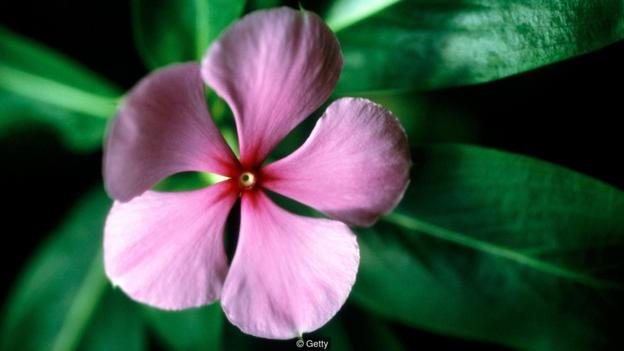What is the last animal you saw? Can you remember its colour, size and shape? Could you easily distinguish it from other animals?
Now, how about the last plant you saw?
If your mental images of animals are sharper than those of plants, you’re not alone. Children recognise that animals are living creatures before they can tell that plants are also alive. Tests of recall also show that study participants remember pictures of animals better than images of plants. For instance, one US study tested “attentional blink” – the ability to notice one of two rapid-fire images – using pictures of plants, animals and unrelated objects. This showed that participants more accurately detected images of animals than plants.
This tendency is so widespread that Elisabeth Schussler and James Wandersee, a pair of US botanists and biology educators, coined a term for it in 1998: “plant blindness”. They described it as “the inability to see or notice the plants in one’s own environment”.

‘Plant blindness’ is ‘the inability to see or notice the plants in one’s own environment’ (Credit: Amanda Ruggeri)
Plant blindness, not surprisingly, results in an under-appreciation of plants – and in a limited interest in plant conservation. Plant biology courses around the world are shutting down at a dizzying rate and public funding for plant science is drying up. While studies haven’t been done on the extent of plant blindness and its change over time, increased urbanisation and time spent with devices means that “nature deficit disorder” (the harm caused to humans by being alienated from nature) is on the rise. And with less exposure to plants comes greater plant blindness. As Schussler has explained, “humans can only recognise (visually) what they already know”.
This is problematic. Plant conservation matters for environmental health. But it also matters, ultimately, for human health.
Plant research is critical to many scientific breakthroughs, from hardier food crops to more effective medicines. More than 28,000 plant species are used medicinally, including plant-derived anti-cancer drugs and blood thinners. (BBC Future recently wrote about one recent example: how mushrooms could help us fight cancer).

The Madagascar periwinkle contains two alkaloids that are used to fight leukaemia and Hodgkin’s disease (Credit: Getty)
Experimenting on plants also offers an ethical advantage over some forms of animal testing: versatile techniques in areas like genome editing can be refined using plants, which are easy and inexpensive to breed and control. For instance, the genome sequencing of Arabidopsis, a flowering plant important in biology research, was a landmark not only in plant genetics, but in genome sequencing in general.
Given how crucial plants are – and always have been – to our very survival, how did humans come to be “plant-blind”?
Seeing green
There are cognitive and cultural reasons that animals, even animal species no more objectively important to humans than plants, are easier to distinguish.
Part of it is how we categorise the world. “The brain is fundamentally a difference detector,” Schussler and Wandersee explain. Because plants barely move, grow close to each other, and are often similar in colour, our brains tend to group them together. With about 10 million bits of visual data per second transmitted by the human retina, the human visual system filters out non-threatening things like plants and clumps them together.

Because plants tend to be similar in colour and almost unmoving, our brains tend to group them together (Credit: Amanda Ruggeri)
This isn’t restricted to humans. Limited attentional capacity even may affect the ways blue jays visually hone in on plants and insects around them.
Then there is our preference for biobehavioural similarity: as primates, we tend to notice creatures that are most similar to us. “From my experience with great apes, they are generally more interested in the creatures more similar to them in appearance,” says Fumihiro Kano, an ape psychologist at Japan’s Kyoto University. As with humans, there’s a social element to this visual preference. “Human-reared apes are more interested in human images than non-human images, including their own species,” Kano says.
In human societies, there’s also constant reinforcement of the idea that animals are fundamentally more interesting and visible than plants. We name animals and assign them human characteristics. We often use animals as sport team mascots. And we’re attuned to individual variation among animals: the personality of a dog, say, or the unique colour pattern of a butterfly.
Seeing animals as similar – or more similar – to us encourages our empathy. With conservation decisions, that’s key. Most of us feel prompted to want to protect, say, polar bears not because we run through a rational list of reasons why we need them, but because they tug on our heart-strings, says environmental psychologist Kathryn Williams of the University of Melbourne. Even within animal conservation, certain charismatic animals (particularly large mammals with forward-facing eyes) receive the lion’s share of attention. Indeed, Williams’ research has shown that people are more supportive of conservation efforts for species with human-like characteristics.

An endangered ghost orchid blooms at Fakahatchee Strand Preserve State Park in Copeland, Florida; plants make up 57% of the US endangered species list (Credit: Getty)
The challenge is magnified for plants. For example, in 2011 plants made up 57% of the federal endangered species list in the US. But they received less than 4% of federal endangered species funding.
“Building those emotional connections with ecosystems and species and the plant as a whole is crucial for plant conservation,” Williams says.

Building emotional connections with plants is crucial for their conservation (Credit: Getty)
Of course, science isn’t a zero-sum game where more interest and money in one set of organisms needs to automatically result in fewer resources elsewhere. But as with any type of bias, acknowledging it is the first step to reducing it.
Becoming less plant blind
One key to reducing plant blindness is increasing the frequency and variety of ways we see plants. This should start early – as Schussler, who is a professor of biology at the University of Tennessee, Knoxville, puts it, “before students start saying they are bored with plants”. One citizen science project aiming to help with this is TreeVersity, which asks ordinary people to help classify images of plants from Harvard University’s Arnold Arboretum.
Everyday interactions with plants is the best strategy, says Schussler. She lists talking about conservation of plants in local parks and gardening.

It is important to get children involved with plants early, such as on nature walks, like the one shown here at the Royal Botanical Gardens, Kew (Credit: Getty)
Plants also could be emphasised more in art. Dawn Sanders of Sweden’s University of Gothenburg, who has collaborated on environmental art projects at the Gothenburg Botanical Garden, has found that visuals and stories are important for getting students to connect with plants and to start asking questions about plants’ experiences, such as how old plants get.
Sanders’ work also points to cultural variations. “Plant blindness is not applicable to all people in the same way,” she says. Compared to the initial research on US students, she says, “we have found our Swedish students connect with plants through memory, emotion and beauty, particularly around things like midsummer and the first days of spring”. For instance, vitsippa (wood anemone) is valued as a herald of spring.
In India, the human-plant link may be more about religion and medicine. Geetanjali Sachdev researches botanical art and education at the Srishti School of Art, Design and Technology in Bangalore. “Their value is certainly experienced at a visceral level,” she says of plants. “We can’t escape it because plants are so intertwined in so many aspects of Indian cultural life.”

Geetanjali Sachdev has noticed plant motifs everywhere in Indian cities (Credit: Geetanjali Sachdev)
In fact, Sachdev has been documenting the ubiquity of plant motifs around Indian cities: from lotus flowers painted on water tankers to botanical kolam (powder) drawings on the ground.
These images extend beyond flowers, which so often dominate memorable encounters with plants in Western countries. “From mythological perspectives, trees, leaves and flowers would all be significant, but from medicinal perspectives in Ayurveda (an Indian form of traditional medicine), many other parts of the plants have value – leaves, roots, flowers and seeds,” she says.
So, plant blindness is neither universal nor inevitable. “Although our human brains may be wired for plant blindness, we can overcome it with greater awareness,” Schussler says.

A mural in India’s first designated public art district, the Lodhi Colony of New Delhi, uses plant motifs (Credit: Getty)
Williams is also optimistic about increasing empathy for plants. “It’s not at all implausible,” she says. “It’s about imagination.” Even fictional plant characters are turning up. Two from the comics world are McPedro, the Scottish-Irish cactus from the web comic Girls with Slingshots, and Marvel’s superhero tree Groot, who has sparked some quirky biology discussions.
The world’s food supply is facing more challenges than ever, due to a combination of population growth, water scarcity, reduced agricultural land, and climate change. Through research on biofuels, plants are also important as a potential source of renewable energy. That means it’s critical to be able to detect, learn from, and innovate with our green friends. Our future depends on it.
BBC Future
More about: plants















































